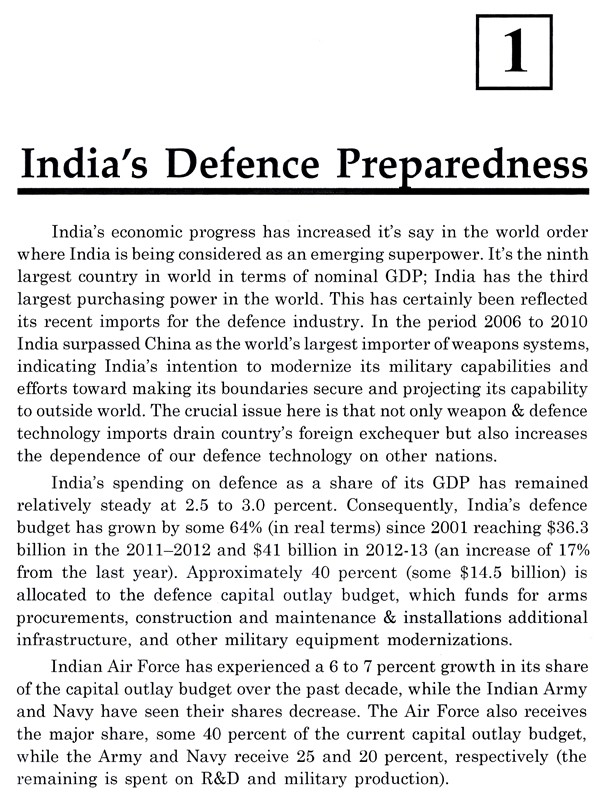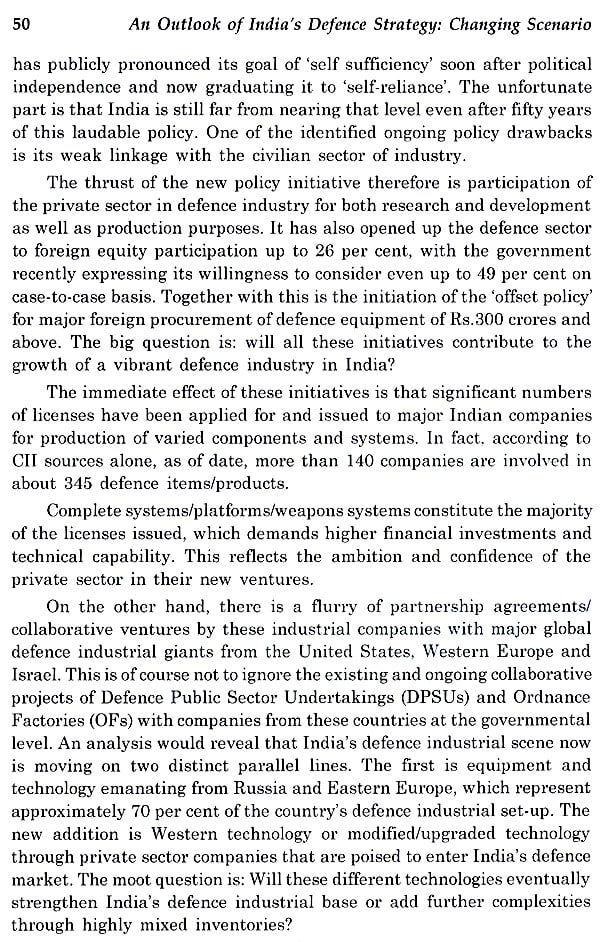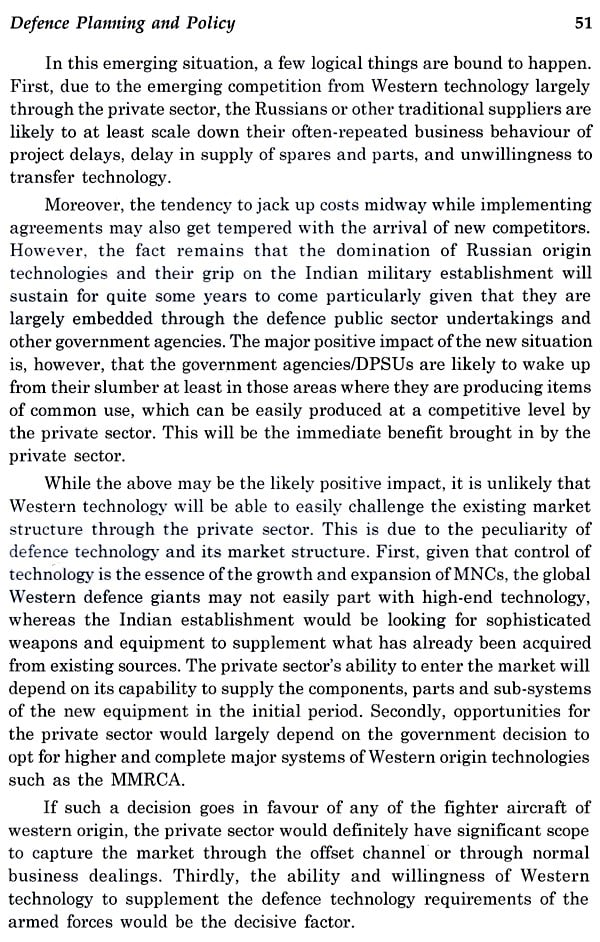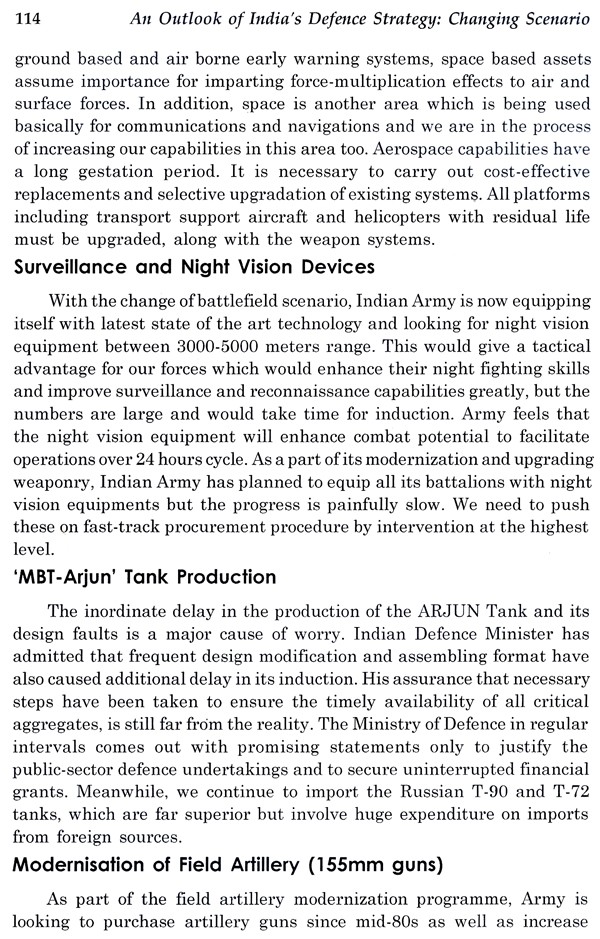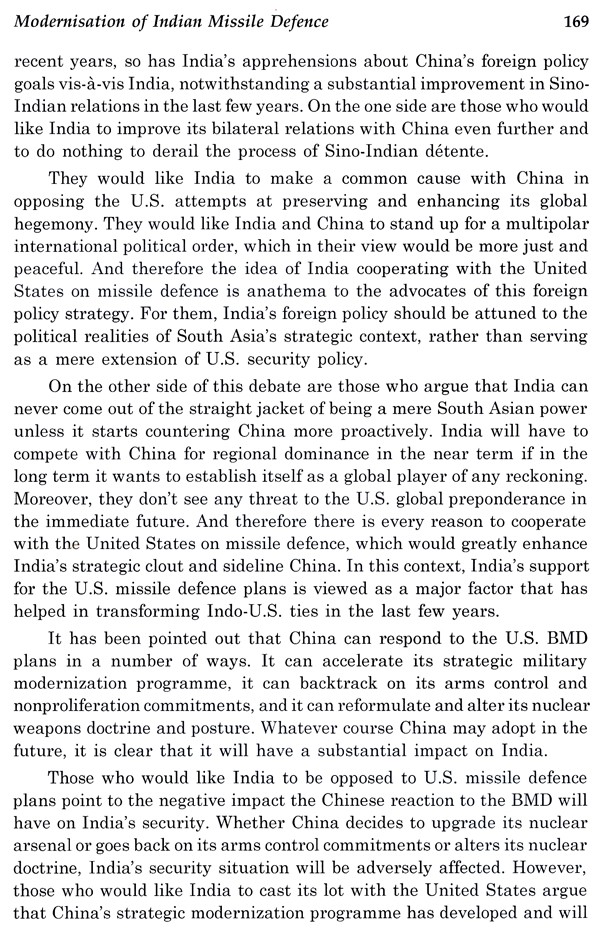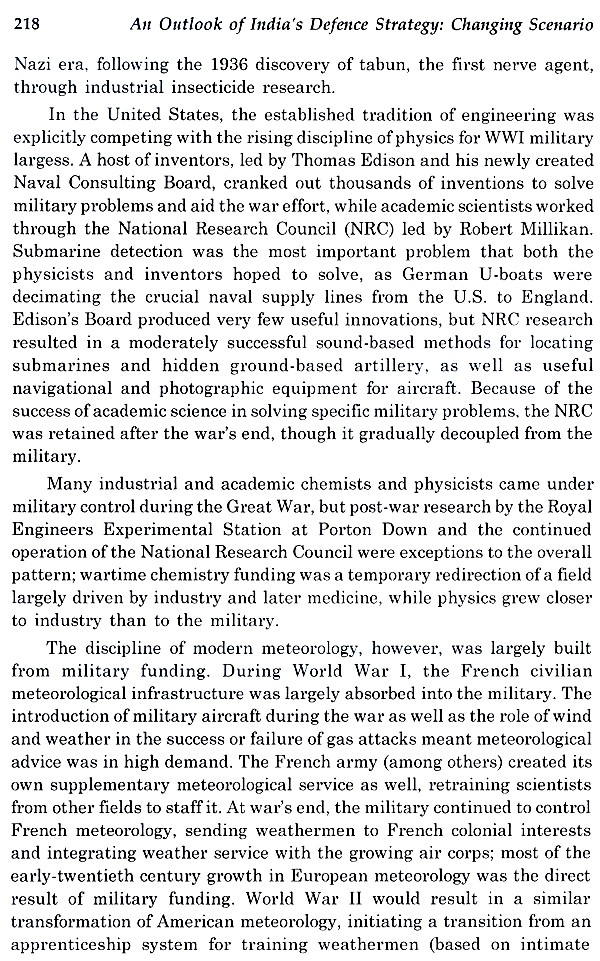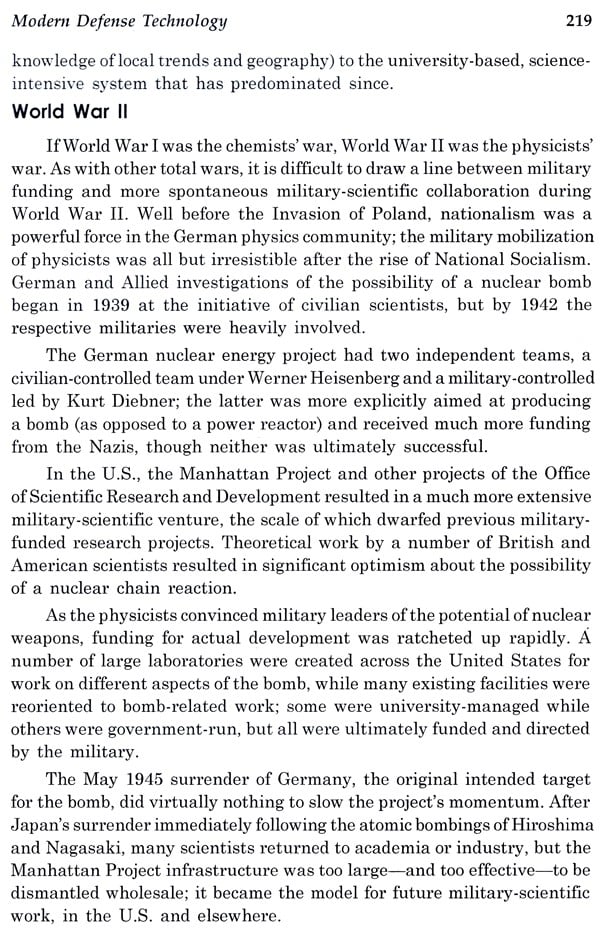
An Outlook of India's Defence Strategy Changing Scenario
Book Specification
| Item Code: | UAU132 |
| Author: | S.C. Narang |
| Publisher: | Prashant Publishing House, Delhi |
| Language: | English |
| Edition: | 2021 |
| ISBN: | 9788195292349 |
| Pages: | 276 |
| Cover: | HARDCOVER |
| Other Details | 9.50 X 6.50 inch |
| Weight | 610 gm |
Book Description
Indian Defence, broadly speaking, falls into three categories: Land Defence, Naval Defence and Aerial Defence which are executed respectively by the Army, the Navy and the Air Force. These three are the basic props of our security against external threats. But these would not suffice without the Engineering Defences needed to fortify our frontiers. Similarly at the times of emergency our National Cadet Corps (NCC) and Border Security Force (BSF) come handy. Defence planning is essentially a subset of overall national level planning in the political, economic and social spheres and has to be evolved in the context of global and proximate factors affecting the nation. It has also to take into account the philosophy and ethos animating the national psyche; in other words the historical and cultural forces which have shaped the collective memory and outlook of the people over the centuries. Defence industrial policy in the initial years after independence was guided by the simple phrase called 'self-sufficiency. This was subsequently modified to 'self-reliance' in defence production and has become a matter of varied interpretation. While for some it means the ultimate objective of complete non-dependence on imports for defence hardware, for others it means selective self-sufficiency in certain critical technologies. This book makes an interesting reading for historians, defence and policy analysts, researchers and general readers alike.
Indian Defence, broadly speaking, falls into three categories: Land Defence, Naval Defence and Aerial Defence which are executed respectively by the Army, the Navy and the Air Force. These three are the basic props of our security against external threats. But these would not suffice without the Engineering Defences needed to fortify our frontiers. Similarly at the times of emergency our National Cadet Corps (NCC) and Border Security Force (BSF) come handy. Defence planning is essentially a subset of overall national level planning in the political, economic and social spheres and has to be evolved in the context of global and proximate factors affecting the nation. It has also to take into account the philosophy and ethos animating the national psyche; in other words the historical and cultural forces which have shaped the collective memory and outlook of the people over the centuries. Defence industrial policy in the initial years after independence was guided by the simple phrase called 'self sufficiency. This was subsequently modified to 'self reliance' in defence production and has become a matter of varied interpretation. While for some it means the ultimate objective of complete non-dependence on imports for defence hardware, for others it means selective self-sufficiency in certain critical technologies. This book makes an interesting reading for historians, defence and policy analysts, researchers and general readers alike.
**Contents and Sample Pages**


